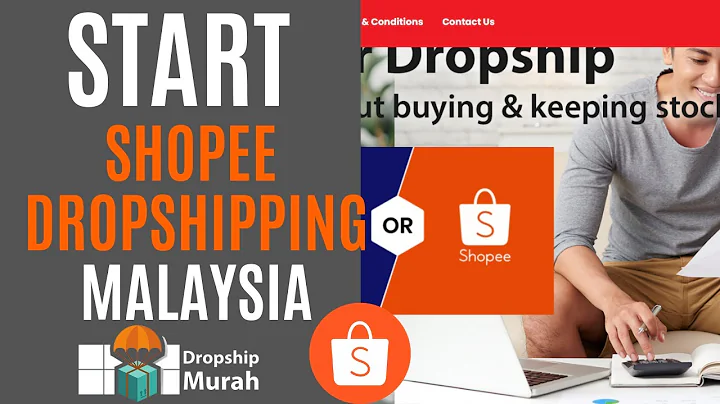Discover the Profits of Drop Shipping
Table of Contents:
- Introduction
- What is Drop Shipping?
- Benefits of Drop Shipping
- 3.1 Low Initial Investment
- 3.2 No Need to Handle Products
- 3.3 No Upfront Inventory Costs
- 3.4 Scalability of Income
- 3.5 Leveraging Established Platforms
- Challenges of Drop Shipping
- 4.1 Finding Reliable Suppliers
- 4.2 Managing Customer Expectations
- 4.3 Dealing with Returns and Refunds
- Is Drop Shipping Still Profitable?
- Conclusion
Is Drop Shipping Still Profitable? Exploring the Benefits and Challenges
Introduction:
In the world of e-commerce, drop shipping has gained significant popularity as a business model. Many aspiring entrepreneurs are drawn to this low-risk, high-potential method of selling products online. However, there is a question that often arises: Is drop shipping still profitable? In this article, we will delve into the benefits and challenges of drop shipping and provide insights into the profitability of this business model in today's market.
What is Drop Shipping?
Before discussing the profitability, let's understand what drop shipping is. Drop shipping is a form of e-commerce where you sell products without holding any physical inventory. Instead, you act as a middleman, facilitating the transaction between the customer and the supplier. When a customer places an order, you simply forward it to the supplier, who then fulfills the order by shipping the product directly to the customer. As a drop shipper, your role is to market and sell the products, without the need to handle the inventory or shipping logistics.
Benefits of Drop Shipping:
3.1 Low Initial Investment:
One of the primary advantages of drop shipping is that it requires minimal capital to start. Unlike traditional business models, you don't need to invest in purchasing bulk inventory upfront. With drop shipping, you only pay for the products once you've made a sale, eliminating the need for extensive initial investment. This makes it an attractive option for aspiring entrepreneurs and those looking to generate additional income streams.
3.2 No Need to Handle Products:
Unlike traditional retail businesses, drop shippers never have to physically handle the products they sell. When a customer places an order, the fulfillment process is entirely handled by the supplier. As a drop shipper, you act as a middleman, focusing on marketing, customer service, and driving sales. This eliminates the need for storage space, packaging materials, and fulfillment operations, allowing you to operate a business from anywhere with an internet connection.
3.3 No Upfront Inventory Costs:
The traditional model of purchasing products in bulk upfront can be risky, as it requires predicting customer demand accurately. However, with drop shipping, you don't have to pre-purchase inventory, reducing the risk of holding unsold products. Instead, you only order products from the supplier when you receive the order from a customer. This enables you to offer a wide range of products without the financial burden of stocking inventory, giving you the flexibility to adapt to market trends and customer preferences.
3.4 Scalability of Income:
One of the attractive aspects of drop shipping is its scalability. Since you don't have to physically handle inventory or worry about storage constraints, you can scale your business rapidly without significant constraints. The more effort and time you invest in marketing, driving sales, and expanding your product offerings, the more income you can potentially generate. While there are limits to the number of hours in a day, your income potential is not capped by a fixed salary or wage structure, offering the possibility of financial growth and independence.
3.5 Leveraging Established Platforms:
When drop shipping, you have the opportunity to leverage established e-commerce platforms like Amazon, Walmart, or eBay. These platforms invest heavily in brand recognition and marketing efforts, attracting a vast customer base. By listing your products on these platforms, you can take advantage of their reputation and trust, potentially leading to increased sales and exposure. This eliminates the need to invest in your own marketing campaigns or create standalone websites, reducing overhead expenses and allowing you to focus on generating sales.
Challenges of Drop Shipping:
4.1 Finding Reliable Suppliers:
One of the key challenges in drop shipping is finding reliable suppliers. As a drop shipper, your business's success relies heavily on the reliability, quality, and timely delivery of your suppliers. It is essential to thoroughly research and vet potential suppliers to ensure they can meet customer expectations consistently. Establishing strong supplier relationships and maintaining open lines of communication is crucial to overcoming this challenge.
4.2 Managing Customer Expectations:
As a drop shipper, you may face challenges in managing customer expectations. Since you have no control over the shipping and fulfillment process, delays or mistakes can occur. It becomes essential to set clear and realistic expectations with customers regarding shipping times, product availability, and potential delays. Effective communication and proactive customer service can help mitigate these challenges.
4.3 Dealing with Returns and Refunds:
Handling returns and refunds can be more complicated in drop shipping than traditional retail models. Since you don't handle the products directly, returns often involve coordinating with suppliers to arrange refunds or replacements. It is crucial to have clear refund policies in place and maintain open communication channels with both customers and suppliers to address any issues promptly and efficiently.
Is Drop Shipping Still Profitable?
With the benefits and challenges explored, the question remains: Is drop shipping still profitable? The answer is yes, but it requires careful planning, market research, and execution. Drop shipping provides a low-cost, low-risk entry into the e-commerce world, offering the potential for substantial profits. However, success in drop shipping relies on factors such as product selection, marketing strategies, supplier relationships, and adaptability to market trends. By implementing effective business strategies and staying up-to-date with industry developments, drop shipping can still be a profitable venture.
Conclusion:
Drop shipping offers numerous benefits, including low initial investment, no need to handle products directly, no upfront inventory costs, scalability of income, and the opportunity to leverage established e-commerce platforms. However, challenges such as finding reliable suppliers, managing customer expectations, and handling returns and refunds need to be carefully addressed. While drop shipping can still be profitable, it requires dedication, research, and adaptability to navigate the evolving e-commerce landscape successfully.
Highlights:
- Drop shipping allows you to start an e-commerce business with minimal upfront investment.
- You act as a middleman, without the need to handle inventory or shipping logistics.
- Drop shipping offers flexibility and scalability, allowing you to scale your income based on your efforts.
- Leveraging established e-commerce platforms can boost your sales and exposure.
- Challenges in drop shipping include finding reliable suppliers and managing customer expectations.
- Careful planning, market research, and adaptability are crucial for drop shipping success.
FAQ:
Q: Can I start drop shipping without any prior e-commerce experience?
A: Yes, drop shipping can be a suitable business model for beginners, as it requires minimal upfront investment and eliminates the need for inventory management.
Q: How do I find reliable suppliers for drop shipping?
A: Research and vet potential suppliers carefully. Look for suppliers with a good track record, positive reviews, and clear communication channels.
Q: Are there any upfront costs involved in drop shipping?
A: In general, drop shipping does not have significant upfront costs. However, there may be expenses for building a website, marketing campaigns, and other business essentials.
Q: Can I sell any type of product through drop shipping?
A: While drop shipping offers flexibility in product selection, it is crucial to conduct market research and choose products with sufficient demand and profit margins.
Q: How do I handle customer returns and refunds in drop shipping?
A: Establish clear refund policies and maintain open communication channels with customers and suppliers. Coordination with suppliers is often required to process returns and issue refunds.
Q: Can I drop ship internationally?
A: Yes, drop shipping can be done internationally, but it is essential to consider factors such as shipping costs, customs regulations, and delivery times.



















